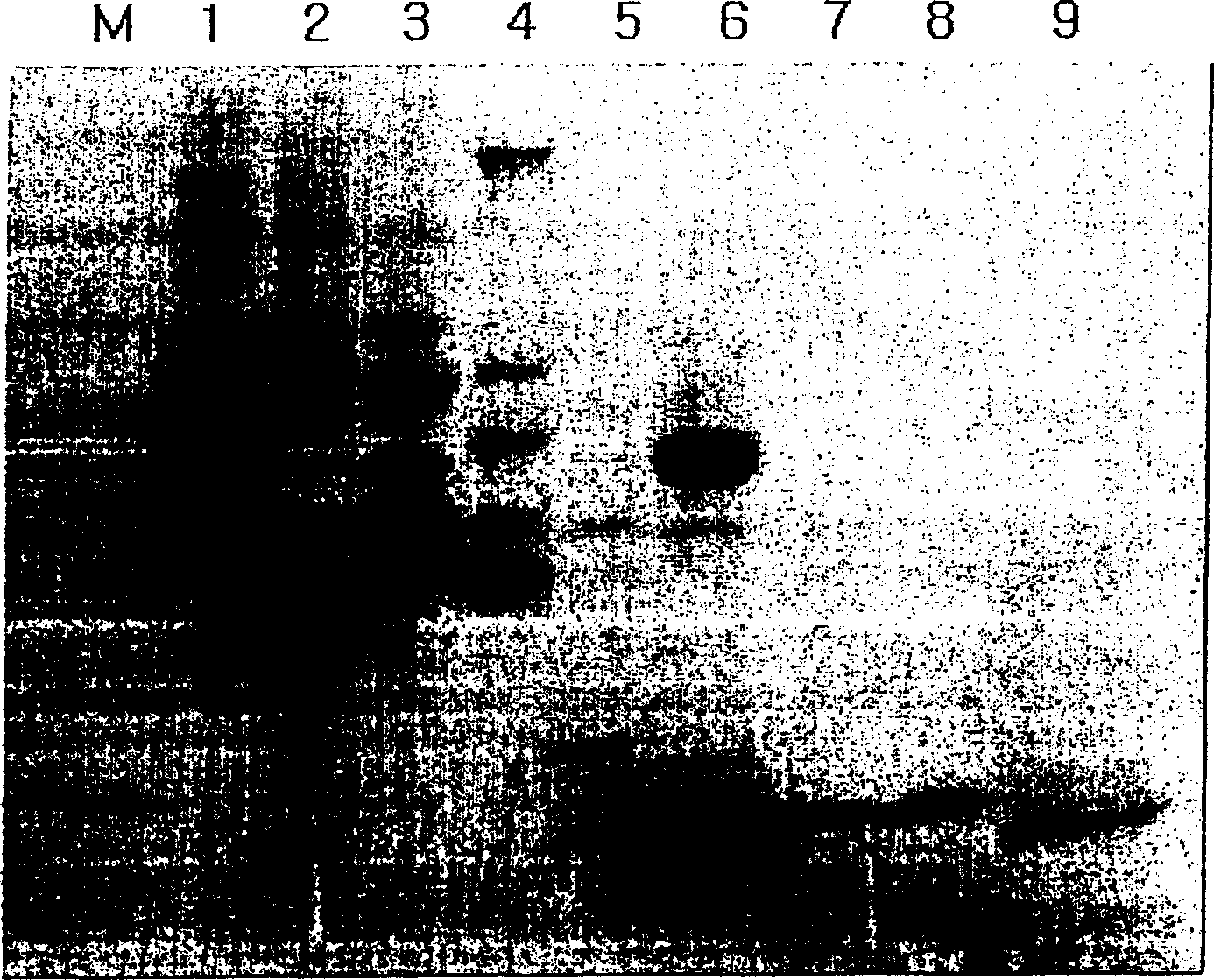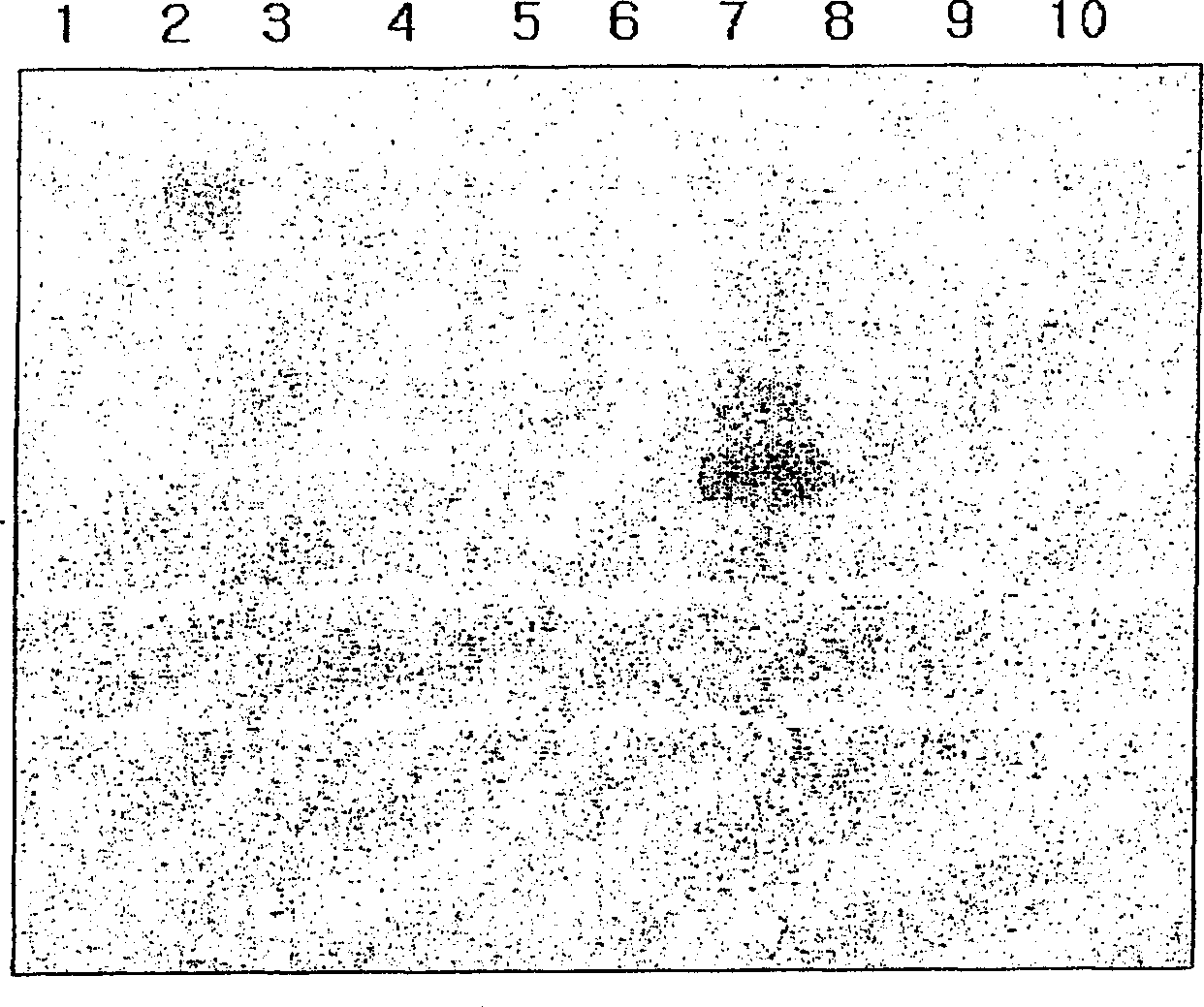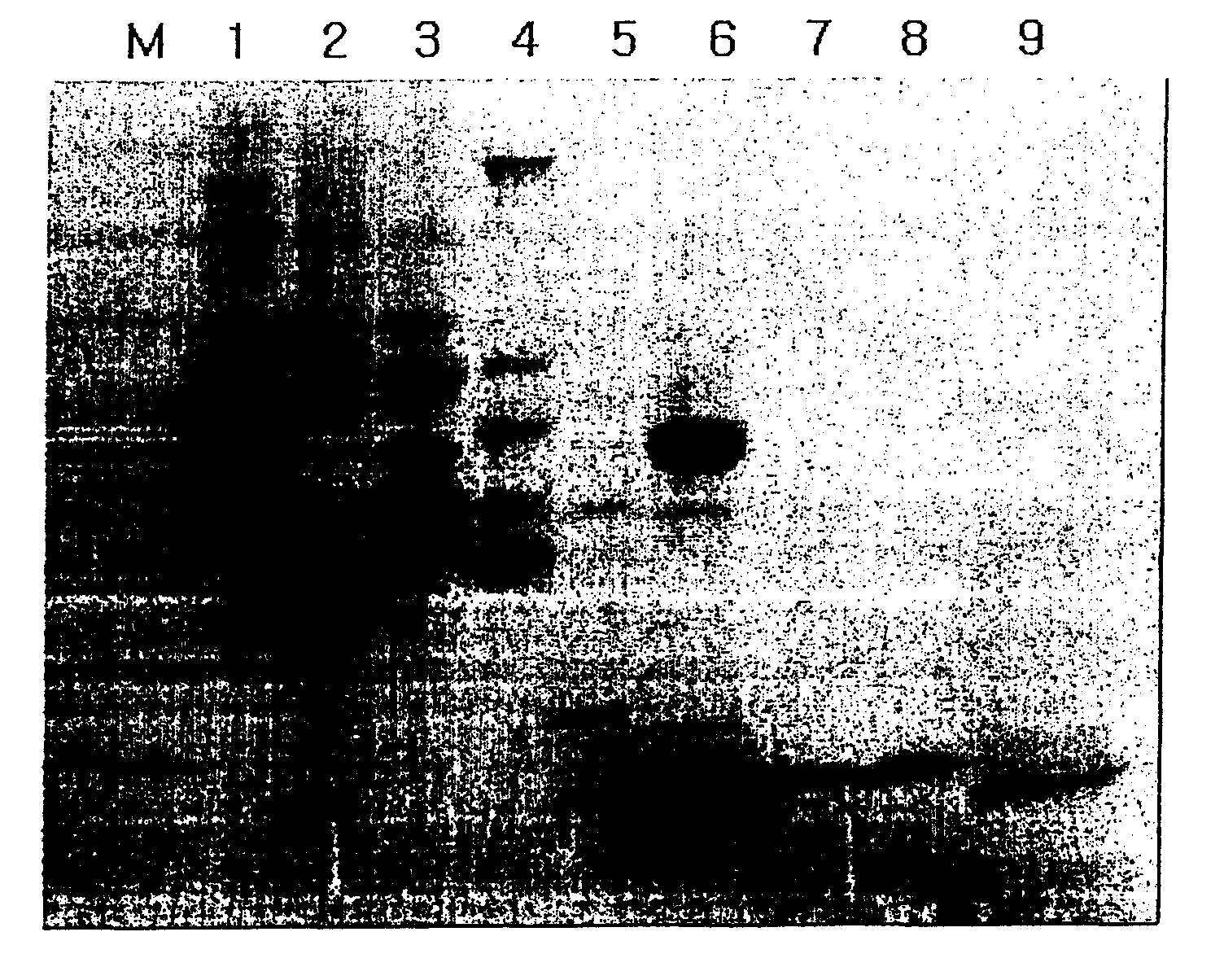Protein chip for diagnosis allergy and detection method for allergen and antibody
A protein chip and allergen technology, applied in the field of protein chips and detection of allergens that produce antibodies, can solve problems such as inability to distinguish and find the cause of allergic reactions, and achieve the effect of reducing volume, saving time and energy
- Summary
- Abstract
- Description
- Claims
- Application Information
AI Technical Summary
Problems solved by technology
Method used
Image
Examples
Embodiment 1
[0033] Example 1 Preparation of protein chip
[0034] 1) Separation of crude protein from allergy-inducing foods
[0035]In order to separate crude protein from allergy-inducing foods, prepare 150 g each of the following substances: milk, egg white, egg yolk, soybean, fresh garlic, garlic treated with artificial gastric acid, uncrushed rice, and barley. These foods are freeze-dried for more than 30 hours to remove water and then rolled into powder. Hexane was added to dry samples at a ratio of 1:5 (w / v), stirred for 30 minutes, and allowed to stand for 30 minutes. The upper layer was decanted and the lower layer was dried. The hexane treatment process was repeated 2 times to remove liquid.
[0036] The liquid-free powder was dissolved in 0.5M NaCl solution at a ratio of 1:4 (w / v), eluted at 4°C for 3 hours, and centrifuged at 15,000 rpm for 1 hour at 4°C. The supernatant was dialyzed against distilled water for 24 hours, lyophilized, and prepared as a protein dissolved i...
Embodiment 2
[0045] Example 2 Using the protein chip of the present invention to detect food allergens
[0046] In order to detect food allergens using the protein chip of the present invention, the protein chip of the present invention was reacted with TBS-T (tris buffer-0.1% Tween 20) and 1% BSA to prevent non-specific reactions. After washing in TBS-T solution for 15 minutes (3 times), the protein chip was reacted with blood sample (60 μl) for 1 hour. After washing, it was reacted with biotin-conjugated anti-human IgE (diluted 1:1000, Vector Co.) at 37°C for 1 hour. To read the protein chip, Cy3 signal was read using ArrayWoRx (Applied Precision Co.), and the program used Imagene (Biodiscovery Co.). The results are shown in Table 2.
[0047] food
[0048] As shown in Table 2, antibodies to egg white, egg yolk, soybean, fresh garlic, and coix were detected in the patient's blood.
Embodiment 3
[0060] Example 3 Using the protein chip of the present invention to detect the type of antibody to a specific food
[0061] In order to detect the type of antibody of a specific food using the protein chip of the present invention, a second antibody containing a different fluorescent type is used for different antibodies. Cy3 and FITC were used as fluorescers for different types of secondary antibodies of the present invention. Fluorescence intensities were measured at wavelengths of 543 nm and 488 nm, respectively.
[0062] Since the results are measured at different wavelengths depending on the antibody, the type of antibody can be determined simultaneously.
PUM
 Login to View More
Login to View More Abstract
Description
Claims
Application Information
 Login to View More
Login to View More - R&D
- Intellectual Property
- Life Sciences
- Materials
- Tech Scout
- Unparalleled Data Quality
- Higher Quality Content
- 60% Fewer Hallucinations
Browse by: Latest US Patents, China's latest patents, Technical Efficacy Thesaurus, Application Domain, Technology Topic, Popular Technical Reports.
© 2025 PatSnap. All rights reserved.Legal|Privacy policy|Modern Slavery Act Transparency Statement|Sitemap|About US| Contact US: help@patsnap.com



